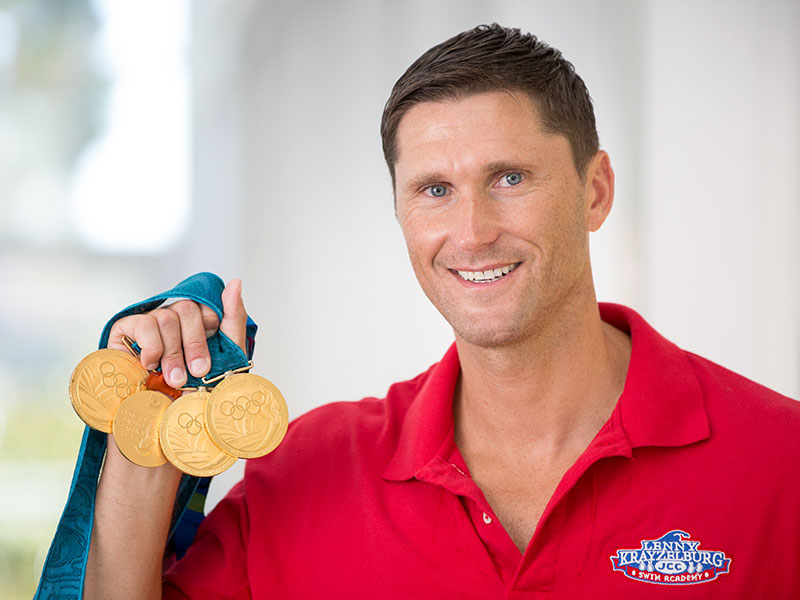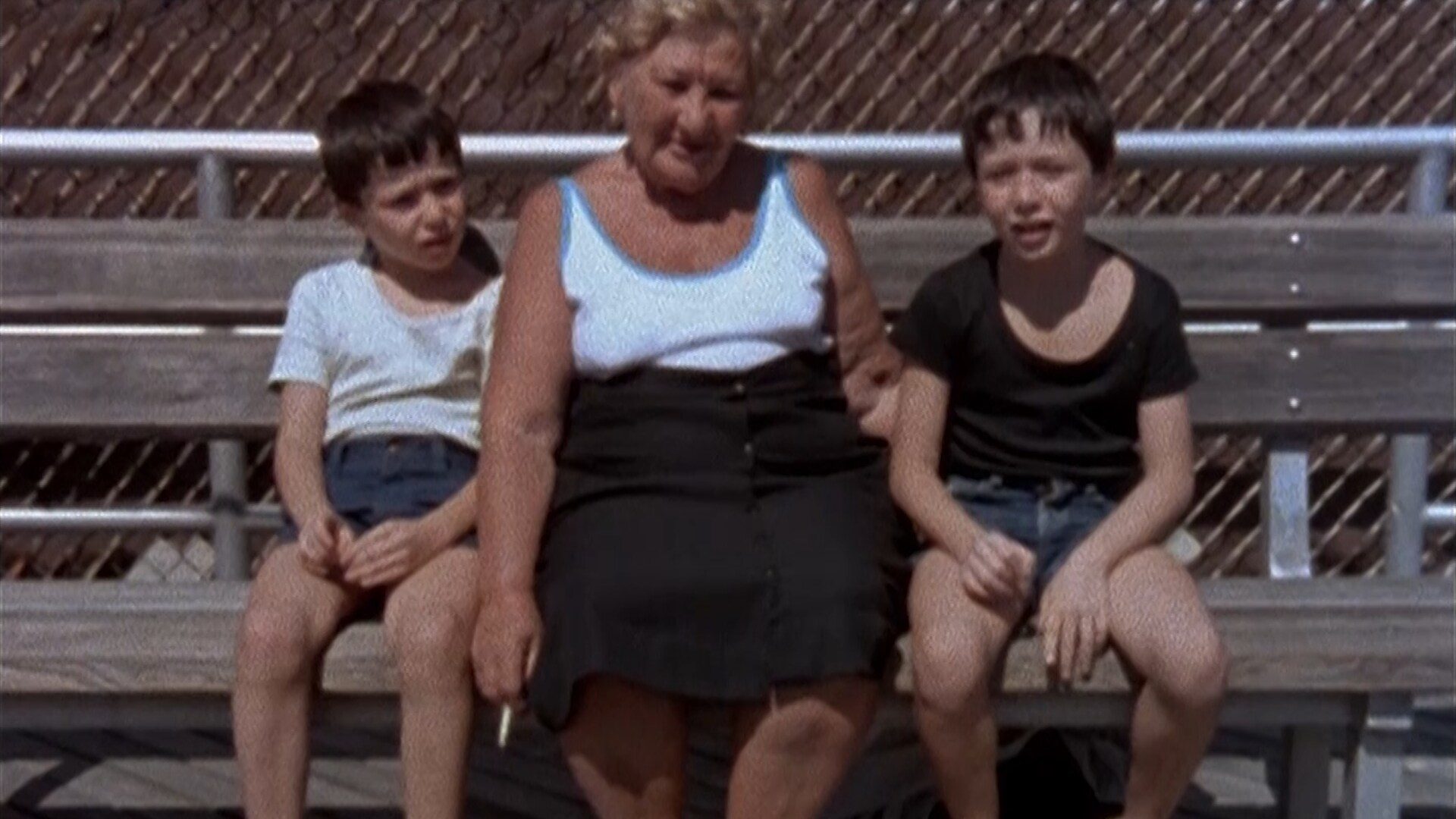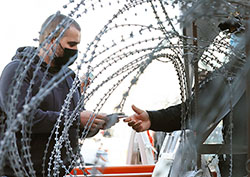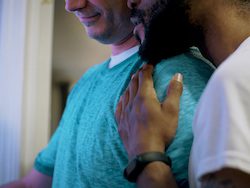Lenny Krayzelburg: Swimming to Success
May 19, 2015

Olympic gold medalist Lenny Krayzelburg came to the United States with assistance from HIAS in 1989.
(Todd Winner)
To mark Jewish American Heritage Month, HIAS.org spoke to noteworthy Jewish-Americans with a refugee background. The second in this series features Lenny Krayzelburg, a HIAS client during the last great wave of Soviet Jewish migration who became a four-time Olympic gold medalist for the U.S., winning three at the 2000 Olympics in Sydney, Australia and another in Athens in 2004.
Born in Odessa, Ukraine, Krayzelburg immigrated to America with his family in 1989. In 1995, he became an American citizen and graduated from the University of Southern California with a B.S. in Finance. An 11-time U.S. National Champion, Krayzelburg founded the Lenny Krayzelburg Swim Academy, which offers a learn-to-swim program for children in 14 JCCs across the U.S.
What do you remember about living in the Soviet Union? Do you recall episodes of anti-semitism?
I remember quite a bit as I left at age 13 and have very vivid memories of growing up in Odessa. My competitive swimming started there and I remember very clearly the program I was part of, the coaches, and some of the swimmers. To this day I have to attribute a lot of my success to being part of the sports program in the Soviet Union because it was so intense at such a young age. I learned there that if you want to be successful you have to work really hard and there are no shortcuts.
Anti-semitism was also unfortunately part of my experience. I was called “zhid” [a derogatory term for Jew] a few times in school by classmates. I got into a few fights with kids. It was also a learning experience and my parents talked quite a bit about what it meant to be a minority. It was one of the reasons they wanted to come to America, so we kids could have better opportunities.
What was your exit from the Soviet Union like?
We left Odessa in December 1988 and went to Vienna, and then to Rome where we waited for a couple of months for an interview at the embassy to get permission to come to the States. It was a unique experience, though obviously our resources and ability to enjoy the culture were limited. In March of 1989 we came to Los Angeles and I grew up in L.A.
You arrived in the U.S. when you were 14 years old. What were your first years here like?
It was a great culture shock. I went to junior high school and I remember that language was the toughest thing for me. I couldn’t understand the teachers. But there were a lot of other immigrants in a similar situation and those who had arrived six months earlier already had a better understanding of the language so I got by by asking them for help. The school was very diverse, there were Hispanic, African-American, Asian, and a lot of Russian families.
Do you think sports helped you become American?
I joined a swim team in Santa Monica almost immediately when we came to the U.S. My dad was very adamant about me not skipping much time in the transition from Ukraine to the U.S.
Sports definitely helped me to understand the culture here better and to adapt faster. There were no Russian-speaking swimmers on my team and I had no choice but to adapt. I got exposed to the culture in a way that I probably would not have otherwise if I had not joined the swim team, gone to competitions and interacted with non-Russian-speaking people.
As a winner of four gold medals in the 2000 and 2004 Olympics, and a former world record holding swimmer, do you realize you were a Jewish role model? How did the pressure to represent Jews in sports impact you?
I became aware, after I won, yes. I was very conscious and very proud. There are not that many Jews that have achieved a high degree of success in sports. We tend to excel in other fields.
I never felt pressure as an athlete because I was Jewish and carrying that tradition. It wasn’t about anything that had to do with my roots. I put pressure on myself but it was about the incredible opportunity to be the best I could be and to do the thing that I loved.
You’ve overcome a serious shoulder injury, returning to your sport with a renewed perseverance. What advice do have for other aspiring athletes overcoming challenges?
Be persistent and don’t give up. Life is all about ups and downs and it’s a cycle. You have to believe in what you are doing and know that in every situation there is something you can learn from and build on.
In my own experiences, even through injuries, I’ve always found a way to train and persevered. So my message is believe in yourself and believe in the process and don’t give up.
What have you been focusing on since you retired from swimming competitively?
When I retired in 2005 I immediately started my Learn to Swim academies and the program we do on a year-round basis teaching kids water safety and how to swim. I started that at the Jewish Community Center in Los Angeles and we now have franchised this program to 14 JCCs across the country. On the non-profit side, we service Hispanic and African-American communities in L.A.; inner city kids have the most limited access to pools and drowning is very prevalent in those communities. I also have a foundation.
How does being a refugee--someone who fled oppression or persecution--play a role in how you identify as an individual?
It’s all about access to opportunity. I’ve been on the receiving end so I know the success in one’s life is never about that one person alone. There are so many people who contribute to it. For me it started with my parents making the sacrifice to come to this country to give me opportunities, and then having organizations such as HIAS sponsoring us so that we could come here and have a better life. Having friends, having mentors, all those things give you opportunity. I’ve been fortunate.
If you’re in the position to give others opportunities then you should because it’s the right thing to do. Immigrants, refugees and people for whom opportunities are more rare tend to really appreciate them and ultimately, that’s what breeds success.
If you missed the first piece in our Jewish American Heritage Month series, a Q&A with León Rodríguez, who since July 2014 has been Director of the U.S. Citizenship and Immigration Services, check it out here.


